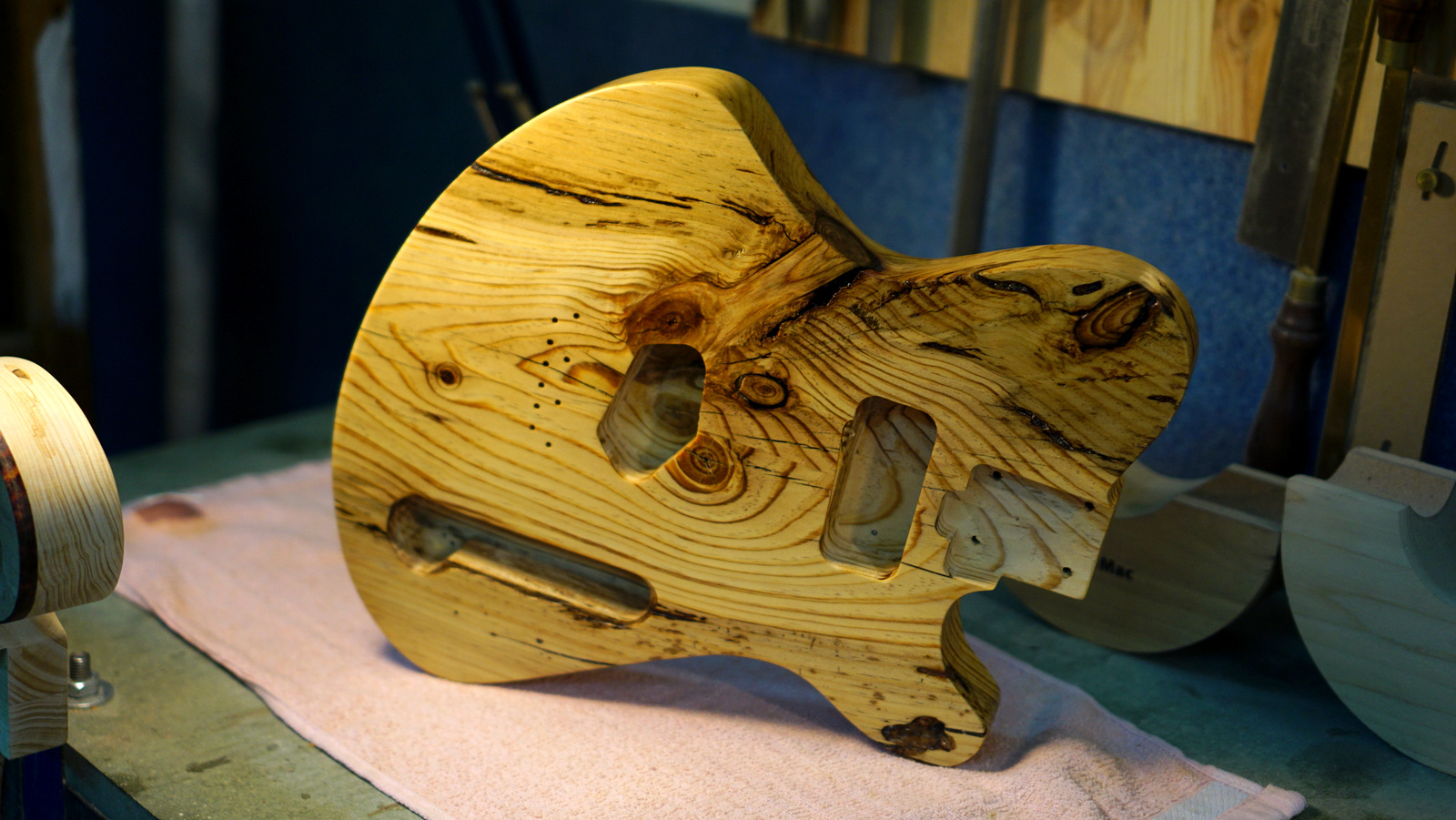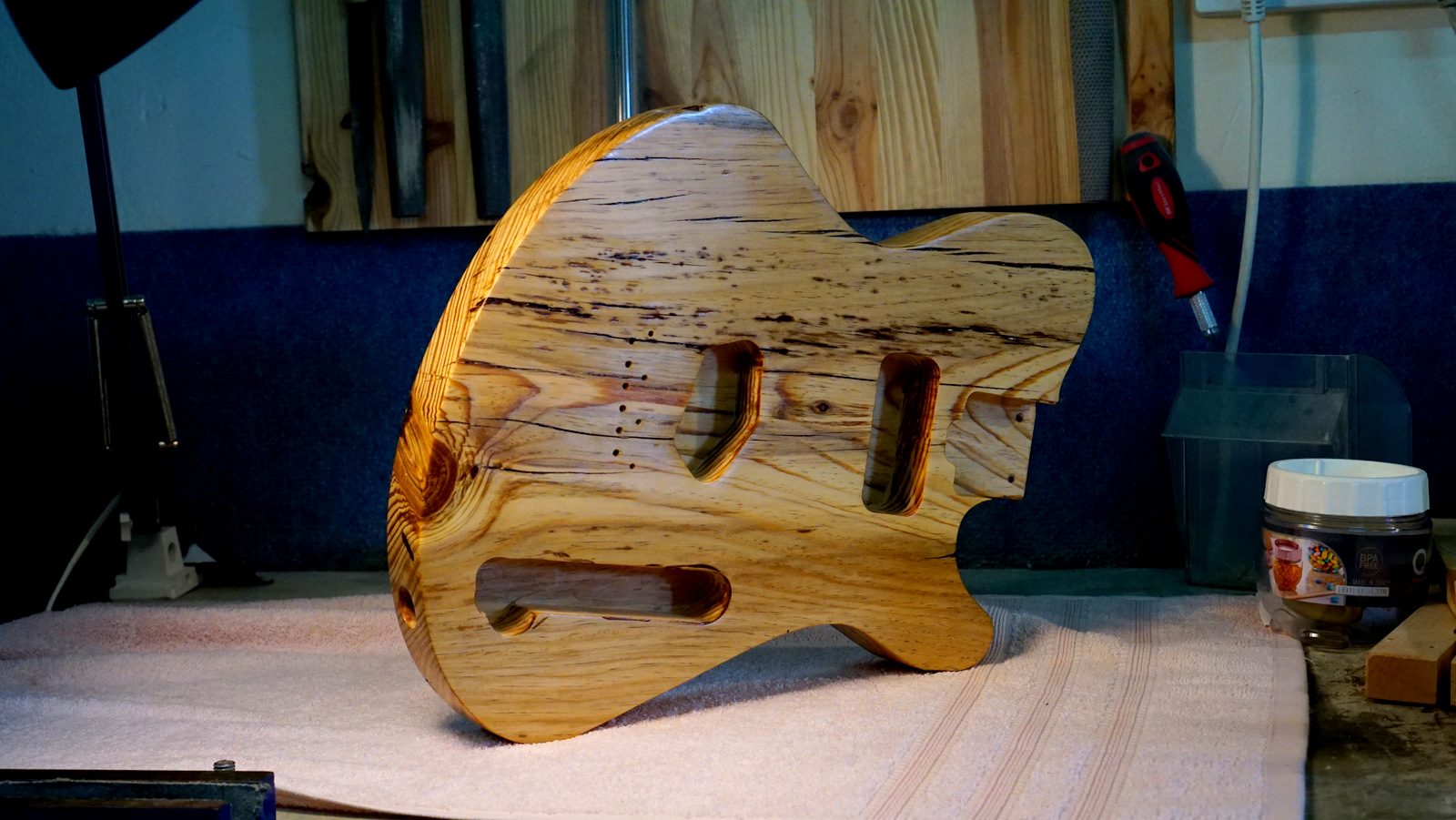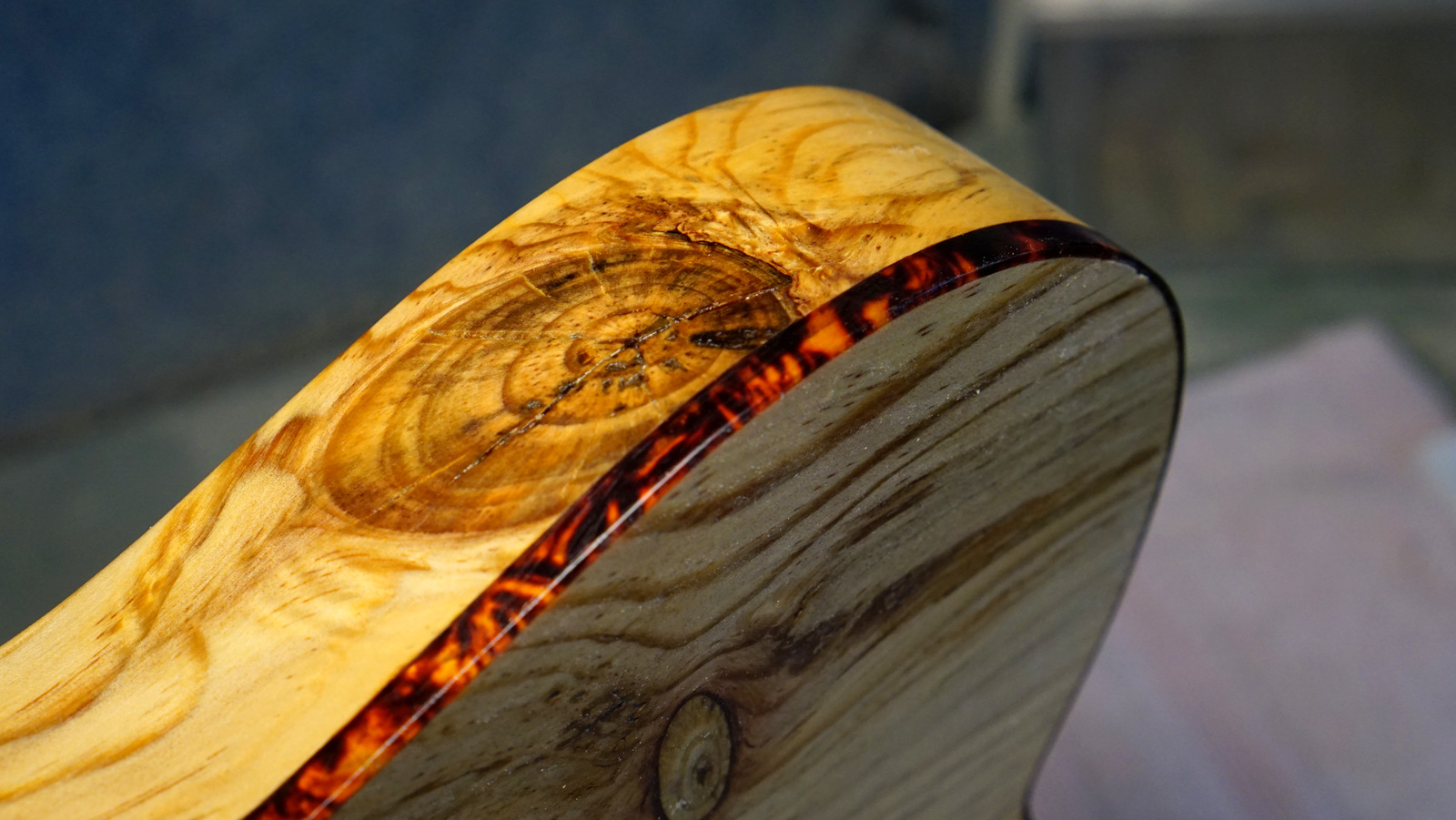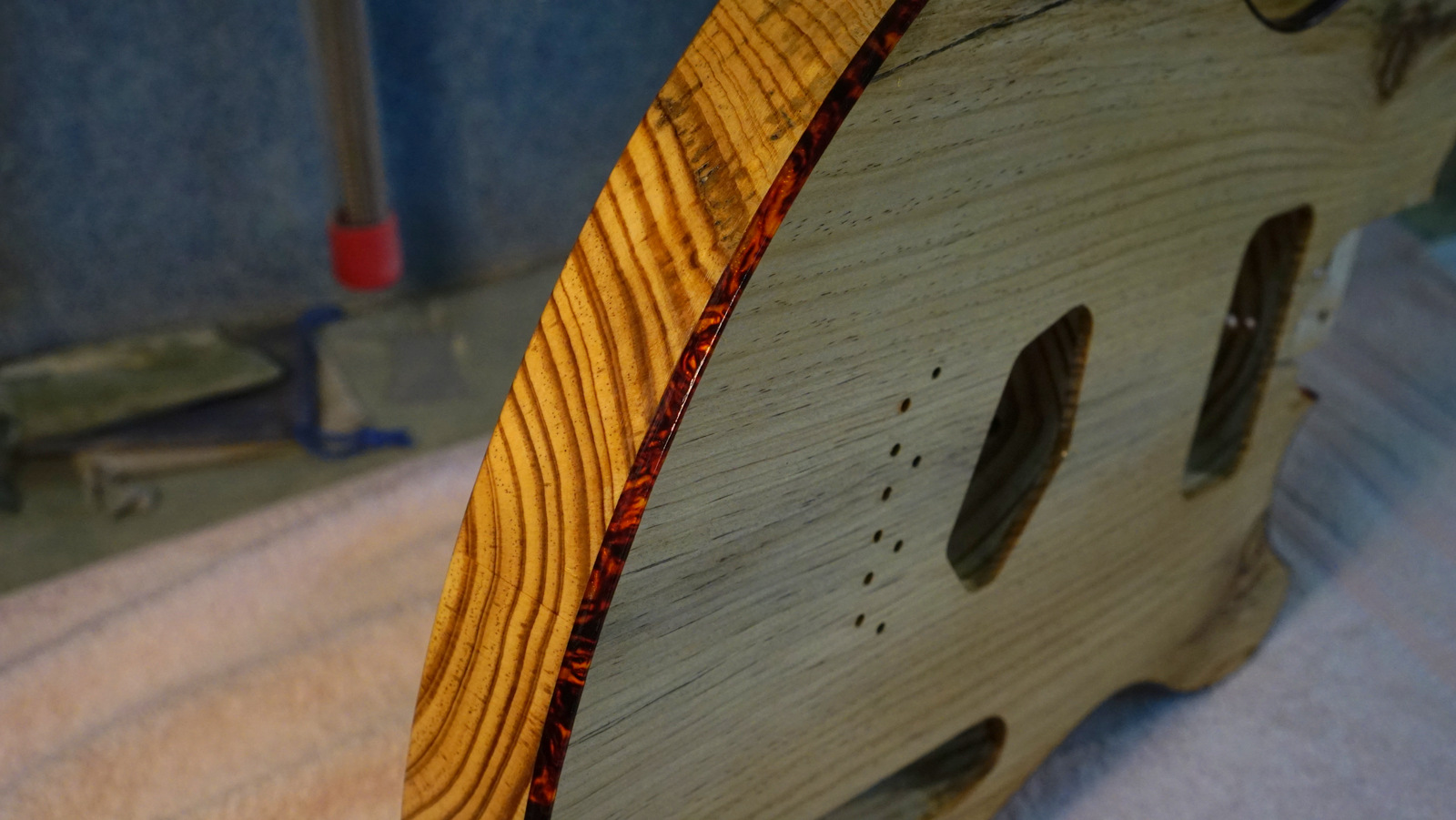
The benefits and the beauty of building a guitar with salvaged and reclaimed wood
 A salvaged Jerusalem Pine Sonic Wonder Guitar
A salvaged Jerusalem Pine Sonic Wonder Guitar
In this article, I will deal with various repetitive questions I get regarding the unique types of reclaimed wood in my guitars, but first of all, I’d like to shed some light on the way most people use the term “reclaimed” regarding aged lumber. In the world of lutherie, we use various terms to describe and define the lumber in the building process.
The first one is aged or seasoned -as the name suggests, it is wood that was dried over a long period. When we work with wood, we want it to be dry; otherwise, it will shrink, crack, warp, and it will be impossible to keep it stable during the building process.
The other term is salvaged, which means that the wood died from various causes, was left in nature (or someone’s garden for that matter), and later was picked up for use. The last one is reclaimed- wood that has already been used. For example, creating an electric guitar from the oak mantel above your fireplace like Brian May’s “Red Special” guitar, which was built with his dad.

Salvaged Jerusalem Pine Sonic Wonder guitar bearing its battle scars
Usually, people mix the “reclaimed” and the “salvaged”, and many times I’ve seen people use the term “reclaimed” for any sort of old lumber from any source. The Sonic Wonder Guitar is an excellent sample of the beauty and advantages of using exotic salvaged lumber.
In order to locate salvaged lumber, I usually have to travel across the land, sometimes to distant locations, and to create a network of connections with various “salvaged lumber hunters”.The salvaged Jerusalem Pine, for example, can be found in the region of the Judaean Mountains. These mountains formed the heartland of the Kingdom of Judah, where the earliest Jewish settlements emerged.The Judaean Mountains were heavily forested in antiquity. The range is mostly composed of Terra Rossa soils over hard limestones.
This habitat has created a unique kind of coniferous lumber which is relatively harder than the European or American pine.It has more resin, and as it ages, it can be used as a fantastic tonewood, I even consider using it as a neck.

Salvaged Jerusalem Pine Sonic Wonder guitar with tortoiseshell binding
Unlike standard milled lumber, the salvaged wood is unique for two main reasons: The natural aging process affects the molecular structures of the lumber (the resin crystalizes, for example), and thus the wood becomes stable with more response and resonance.
The second one is the unique look that can only be found in salvaged lumber. When the outer bark is exposed to insects, the lumber becomes a living habitat for various fungi species, producing colorful pigmentation.There are also the “battle scars” and cracks of wood exposed and left for the elements, and of course, let’s not forget the oxidation process.
Over the next few weeks, I will upload beautiful samples through the building process.



